DOI:10.32604/cmc.2022.026749

| Computers, Materials & Continua DOI:10.32604/cmc.2022.026749 |  |
| Article |
Two-Dimensional Projection-Based Wireless Intrusion Classification Using Lightweight EfficientNet
1School of Strategic and Global Studies, Universitas Indonesia, Depok, 16424, Indonesia
2National Institute of Information and Communications Technology (NICT), Koganei, 184-8795, Japan
3Department of Electrical Engineering and Information Technology, Universitas Gadjah Mada, Yogyakarta, 55281, Indonesia
4School of Computing, Korea Advanced Institute of Science and Technology (KAIST), Daejeon, 34141, Korea
*Corresponding Author: Muhamad Erza Aminanto. Email: erza.aminanto@ui.ac.id
Received: 04 January 2022; Accepted: 02 March 2022
Abstract: Internet of Things (IoT) networks leverage wireless communication protocols, which adversaries can exploit. Impersonation attacks, injection attacks, and flooding are several examples of different attacks existing in Wi-Fi networks. Intrusion Detection System (IDS) became one solution to distinguish those attacks from benign traffic. Deep learning techniques have been intensively utilized to classify the attacks. However, the main issue of utilizing deep learning models is projecting the data, notably tabular data, into an image. This study proposes a novel projection from wireless network attacks data into a grid-based image for feeding one of the Convolutional Neural Network (CNN) models, EfficientNet. We define the particular sequence of placing the attribute values in a grid that would be captured as an image. Combining the most important subset of attributes and EfficientNet, we aim for an accurate and lightweight IDS module deployed in IoT networks. We examine the proposed model using the Wi-Fi attacks dataset, called the AWID2 dataset. We achieve the best performance by a 99.91% F1 score and 0.11% false-positive rate. In addition, our proposed model achieved comparable results with other statistical machine learning models, which shows that our proposed model successfully exploited the spatial information of tabular data to maintain detection accuracy.
Keywords: Intrusion detection; impersonation attack; convolutional neural network; anomaly detection
Nowadays, the IoT is developing very rapidly. The Internet has become a primary need for everyone. People are always connected to the Internet network through their smartphone, laptop, or personal computer. Adults, kids, and older people are inseparable from their devices. The recent technology development of IoT networks has led to the prosperity of smart environments [1]. Information pooled by IoT sensors could manage smart city applications’ assets, revenues, and resources with increased performance and efficiency [2].
IoT is commonly applied in particular domains such as smart grids, smart cities, and smart homes [3]. Jalal et al. provided the one advantage of using smart homes for helping daily human life [4]. At the same time, Asaad et al. reviewed the benefit of leveraging smart grids in a country [5]. Despite all the prosperity, IoT networks leave a vulnerable hole to be exploited by adversaries, which is wireless communication channels [1]. When people are connected to the Internet network, they are vulnerable to various malicious cyber attacks from adversaries. Different types of attacks on Wi-Fi include impersonation attacks, injection attacks, and flooding [6].
An impersonation attack is a form of attack in which an adversary poses as a trusted person to trick the victim [7]. Usually, the adversary will collect someone’s data through the Internet and use it to convince the victim that he is the real person. An injection attack is a malicious code injected into the network and steals all the victims’ databases [8]. Several well-known injection attacks are SQL Injection, Cross-Site Scripting (XSS), and SMTP/IMAP Command Injection. Finally, a flooding attack occurs when adversaries send massive traffic into the victim’s network [9]. The main goal is to create network congestion to hinder legitimate traffic. Because of these various attacks, a defensive mechanism as a countermeasure is needed. The mechanism is called IDS.
IDS can be classified into two classes: signature-based and anomaly-based IDS [10,11]. Signature-based IDS is a classic IDS system that uses an attack signature database as the detection tool. Anomaly-based IDS monitors the inbound traffic to detect any malicious action. The anomaly-based IDS can detect novel attacks by leveraging a machine learning model, which a firewall could not do. However, there is a problem with the current IDS. Recent publications of IDS show that it is difficult to handle complex datasets with high dimensionality [12]. Because of that reason, we want to propose a lightweight machine learning framework using two-dimensional projection for IDS. We train our system using the AWID2 dataset, a Wi-Fi intrusion dataset consisting of four classes: normal, impersonation, injection, and flooding attacks.
This paper proposes a two-dimensional projection-based IDS system that utilizes a lightweight CNN, EfficientNet [13], for the classification process. Our system consists of three main parts: 1. Dataset Preparation, 2. Data Preprocessing with feature selection using Random Forest, and 3. Image Classification using EfficientNet. This paper is the first DL-based IDS that combines data-to-images projection with EfficientNet for Wi-Fi networks IDS to the best of our knowledge. Compared to previous works, our main contributions are listed below:
1. We provide a data-to-image conversion process by using a zigzag scan pattern from the JPEG images compression technique based on their feature importance.
2. We handle the IDS data conversion into graphical number format that represents the attribute value of each feature.
3. Our framework explores feature selection using random forest models with cross-validation.
4. We propose a lightweight CNN-based IDS using EfficientNet-B0 architecture to handle complex datasets.
5. Our proposed system identifies the spatial correlation between features through grid-based images.
6. We provide the performance analysis by highlighting our model’s F1 score and accuracy.
The remainder of this paper is organized as follows: Section 2 provides related work on utilizing deep learning techniques in IDS. The proposed model and data processing are explained in Section 3. Section 4 shows the experimental results of each module in the proposed model. While Section 5 provides the comparison of the proposed model with other machine learning models. Section 6 closes this paper with conclusions and outlines future research directions.
Study about IDS has been conducted continuously since several years ago [14]. Starting from using a list of attack databases; until leveraging the latest machine learning method [15,16]. Smys et al. [17] proposed a hybrid convolutional neural network model for IDS suitable for many IoT applications. Khan et al. [18] introduced an efficient and intelligent IDS to detect malicious attacks. They leverage Convolutional Autoencoder (Conv-AE) from spark MLlib for misused attack detection. Another work by Li et al. [19] introduced an AE-based IDS on random forest feature selection. However, these works have faced the difficulty in handling the traffic of massive IDS datasets.
SwiftIDS [20] tried to address the scalability issue by using a parallel intrusion detection mechanism to analyze the network traffic. The system showed an encouraging performance, but it still requires a longer processing time. Another approach by Rahman et al. improved the parallel IDS model by applying side-by-side feature selection, followed by a single multilayer perceptron classification [21]. Finally, a hybrid scheme that combines the deep Stacked Autoencoder (SAE) and machine learning methods is introduced by Mighan et al. [22]. Those works show a relation between several features, processing time, and accuracy, which are three main variables in the IDS model.
Seonhee et al. [23] proposed an IDS with CNN using a malware dataset. They converted the malware file into an 8-bit grayscale image. Li et al. [24] also adopted image classification using CNN, but with a different dataset, NSL-KDD. Unlike both works [23,24], our work adopts and improves the text-to-image conversion method proposed by Al-Turaiki et al. [25]. They [25] convert dataset attributes from text format into grayscales. The value ranges between 0 and 255 [26]. The grayscales generate small square images; then, they are placed sequentially. We improve their method [25] by utilizing number conversion. In our case, the number represents the level of importance of each feature. We place the number based on the JPEG compression technique sequence, starting from the upper left corner. We also leverage EfficientNet-B0, a form of CNN, to classify the image that we generate.
The proposed methodology in this study is divided into four main parts, namely data preparation, data preprocessing, modeling, and evaluation. We use several techniques to obtain train, validation, and test sets in data preparation. First, tabular data was converted into grid-based images data through data preprocessing. Then we do the modeling to classify the images. Finally, we evaluate the performance of the trained model.
We used the normalized AWID2 dataset, which has Test and Train sets. First, we combined these two parts into a dataset to avoid bias. Then, we created train, validation, and test sets from this dataset. The entire data preparation process can be seen in Fig. 1.

Figure 1: Data preparation process
Our combined dataset has 2,371,218 samples with 154 columns plus one target column. In this dataset, there is one normal (0) class and three attack classes, that is, impersonation (1), injection (2), and flooding (3). More than 90% of the existing samples are normal (0) class; this causes an imbalanced class distribution.
We used an undersampling technique to tackle imbalances in our dataset and reduce the number of samples used to save resource consumption. We used 40,000 samples or 1.7% of total samples with 10,000 samples per class. From this process, we got a new dataset, the Balanced Dataset.
We divided our balanced dataset into the train, validation, and test sets with a ratio of 8:1:1; we got 32,000, 4,000, and 4,000 data for train, validation, and test sequentially. We also created an imbalanced test set with the same distribution as our combined dataset. In this test set, 20,000 samples are used with the distribution, as shown in Fig. 2. In total, we got a test set with the size of 24,000 samples or 1% from our combined dataset.
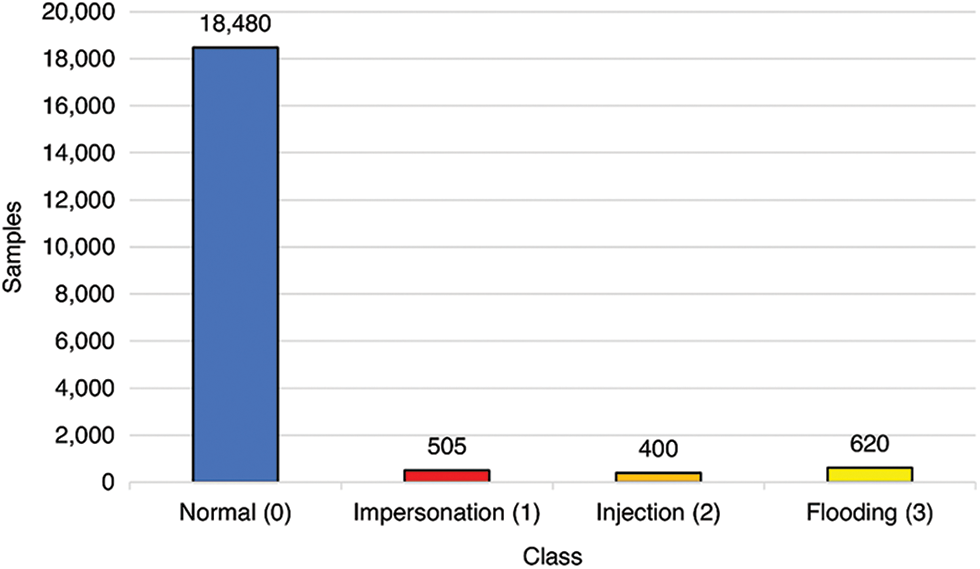
Figure 2: Imbalanced test set distribution
We use data-to-images projection by writing feature values on an image using a program. Each data instance is turned into a single image. The writing of this feature value follows a pattern where each value fills one grid. The number of grids in one image is the square of positive integers to get n × n grids. Due to the nature of the method, we did not use all features in the data. Therefore, the first step in our method is to perform feature selection.
We sort the features based on their importance in influencing the classification in feature selection. We took the top-k features from this ranking, where k is the number of features to be used. The ranking was obtained through the average value of feature importance from 5 random forest models. Finally, we trained five random forest models using 5-cross-validation from our train set. This whole process can be seen in Fig. 3.
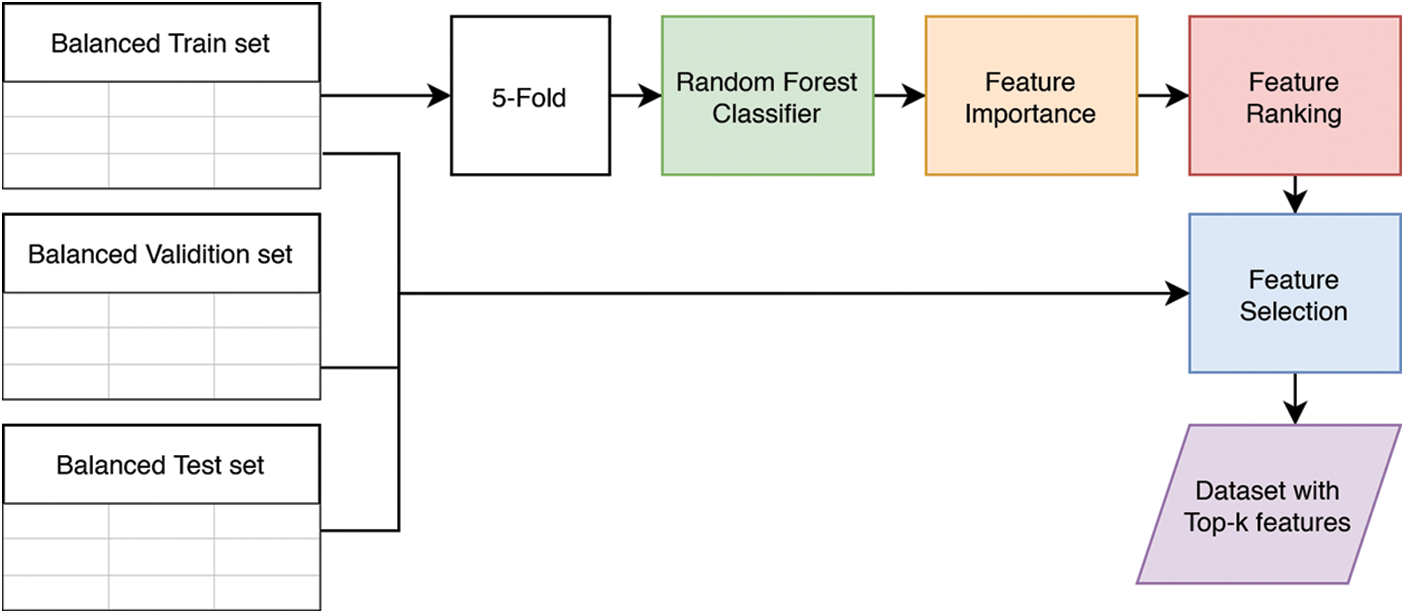
Figure 3: Data preprocessing process
The pattern we used in our method mimics zigzagging the scan pattern like the interleaving code in the JPEG [27], as shown in Fig. 4. First, the highest rank feature is on the grid in the upper-left corner, then the next feature follows a zigzag pattern so that the position of each feature based on its rank will look like Fig. 4. Finally, the lowest rank feature is in the lower-right corner.

Figure 4: Pattern example for k = 25 (left) and features placement based on their ranking (right)
The image we produced has a resolution of 224 × 224 with RGB channels for the total k values. We wrote the feature value using the Hersley Simplex font with white color on an image with a black background. A sample of the Hersley font can be seen in Fig. 5. To maintain consistency, we wrote each feature value in 3 decimal formats. The whole process of data-to-image projection was done using Python and OpenCV.

Figure 5: Numeric samples from Hersyler simplex font
We used the CNN model to classify the images generated in this method. We used the EfficientNet-B0 architecture [13], a light-weighted CNN model, which performed well on the ImageNet dataset while maintaining model efficiency. The nature of this architecture is suitable for application in low-end devices, which are preferred for use in wireless networks.
For our generated image that has 224 × 224 resolution with RGB channel, EfficientNet-B0 offered 4,054,695 total parameters or 16 MB file size in H5 format. This number is the smallest compared to other architectures in the EfficientNet family. We used the Tensorflow Framework running on an RTX 2070 laptop with 32 GB memory for our modeling purpose.
We trained our model for ten epochs using a Stochastic Gradient Descent (SGD) optimization algorithm with a learning rate = 0.05 and a batch size of 32. We rescaled the pixel value to be in the range of 0 to 1. Three models were trained on each k value, so there were 33 models that we trained. We did this to get more robust data from each image classification on value k. As a reminder, we trained each model on 32,000 images and 4,000 images as the validation set.
For model evaluation, we used four metrics: Accuracy, F1 score, False Alarm Rate (FAR), and False Negative Rate (FNR). The accuracy score is good to see how well our model guesses the class, but it fails to provide good insight into the imbalanced dataset. Therefore, we used F1 score for our primary metrics for our imbalanced dataset. It combines precision and recall scores, making F1 scores better insight into how well our model predicts in imbalanced datasets. We conducted multiclass classification task since there are four classes in the dataset. Precision, recall, and F1 score were originally matrices for binary classification, so we used weighted scores on precision, recall, and F1 scores for our multiclass classification.
From a different perspective, our classification can be a binary classification. In this classification, the positive class (P) indicates the attack class (impersonation, injection, and flooding), and the negative class (N) indicates the normal class. This means True Positive (TP) will indicate the number of attack classes that have been detected correctly, False Negative (FN) indicates the number of attack classes that were not detected, False Positive (FP) indicates the number of normal classes detected as attack classes (False Alarm), and True Negative (TN) indicates the normal class that has been recognized correctly. Conversion from multiclass confusion matrix to binary confusion matrix can be seen in Fig. 6.

Figure 6: Confusion matrix for multiclass to binary classification
As we mentioned before, we used feature ranking to decide the feature we were putting for image projection. The complete list of our feature ranking can be seen in Tab. 1. The total of all feature importance scores is 1. The maximum importance score is 0.0708 belonging to feature 141. About 43% of features have an importance score close to zero. A score close to zero means some features may be just noises.

We plotted a graph of cumulative feature importance score, as shown in Fig. 7. We got a cumulative score of 1 using only 88 features. This confirms that the remaining 66 features are probably just noises. Based on this ranking, we get the top-k feature used on image projection. We used the value of k = 25 as the baseline, and we decreased and increased the value. In total, we used 11 values of k, which were 4, 9, 16, 25, 36, 49, 64, 81, 100, 121, and 144.
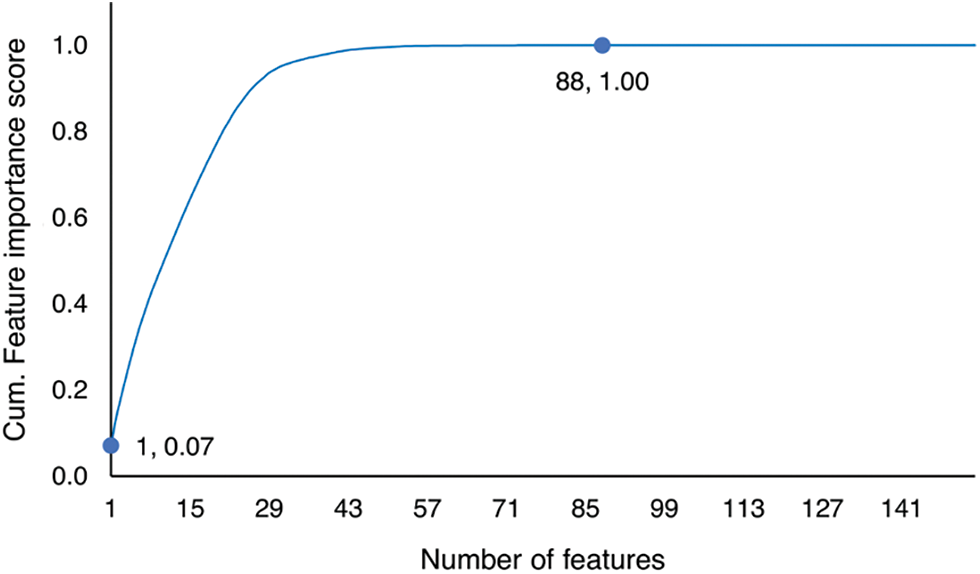
Figure 7: Cumulative feature importance score
A sample of the images for each value of k that we used can be seen in Fig. 8. It is essential to mention that there were drawbacks in the feature writing because we used the same resolution for each value of k. First, the writing of the feature value becomes smaller every time k increases. Second, the writing of feature values deform every time k increases, as shown in Fig. 9, where k is the number of attributes. This has happened because the number of pixels on each grid decreases as the value of k increases. Third, the writing of the value of the features started to be hard to read at k = 49; at k = 144, the writing seems to be shaped like a straight line.
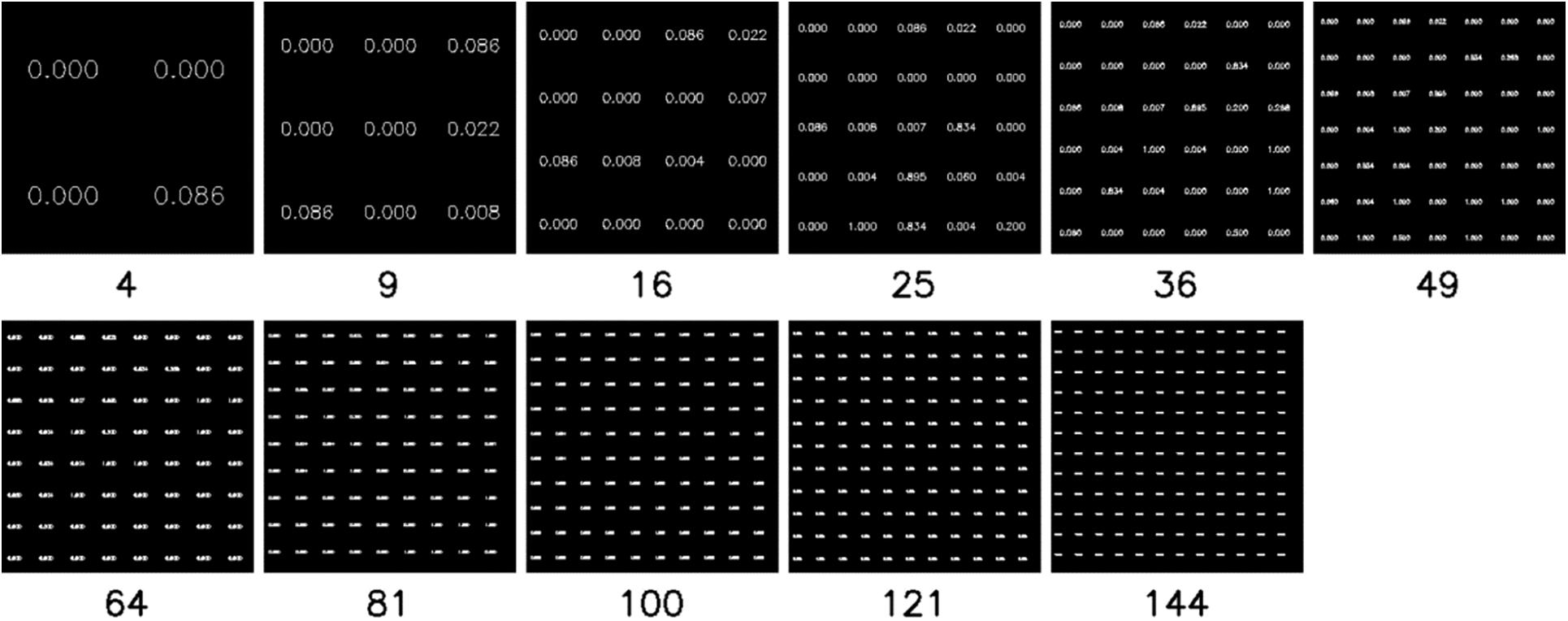
Figure 8: Image projection samples for each value of k
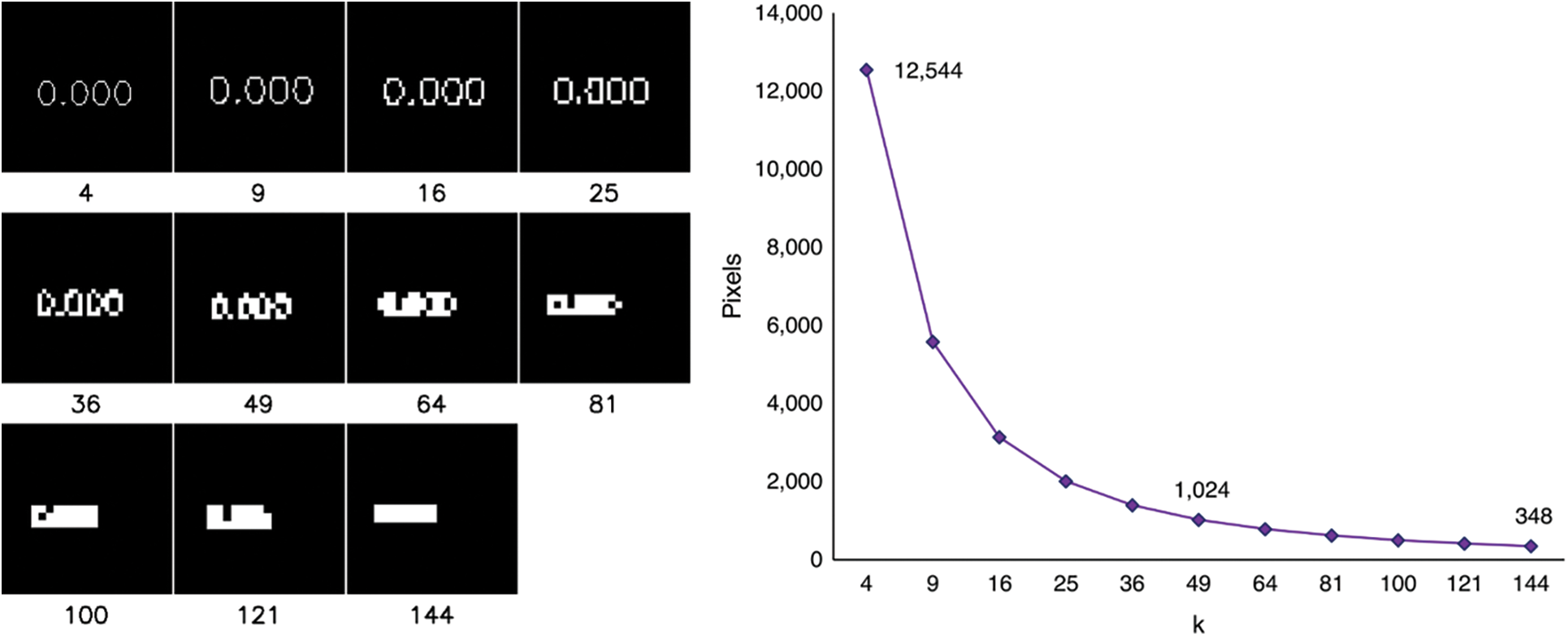
Figure 9: Writing in a grid for each value of k (left) and number of pixels per grid (right)
Our experiment consists of training three models based on given top-k features ranking. We did two tests on our models: the first was on a balanced dataset, and the second was on an imbalanced dataset. First, we compared our models using predefined metrics, and we took the average score for each value of k (3 models for each value of k). The result of our test can be seen in Tab. 2.

We highlight the highest value in each column in the table. The model that uses 49 features looks better on the balanced dataset while the model that uses 36 features looks better on the imbalanced dataset. F1 value and accuracy start to decrease at k = 100. We argue that k values that produce the best performance range are from 25 to 100.
This result shows a decrease in performance in the imbalanced dataset compared to the balanced dataset. Although we cannot mention the significance of the decrease in performance, we assumed that this decrease was due to the larger number of samples in the imbalanced dataset. This may happen because we only use 1% of the dataset, which may not capture all the information in the imbalanced dataset.
4.5 False Alarm Rate and False Negative Rate
We plotted False Alarm Rate (FAR) and False Negative Rate (FNR) for each value of k, see Fig. 10, where k is the number of attributes. As we previously mentioned, we obtained these values by calculating the mean of the combined test results from the balanced and imbalanced dataset in a binary perspective. The highest FAR and FNR were 11.50% at k = 4% and 2.43% at k = 9, respectively. Configurations at k < 25 have poor values, either FAR, FNR, or both. Meanwhile, the FAR value starts to increase at k > 100. These results strengthen our statement that the range of k values that produce the best performances is 25 to 100.

Figure 10: FAR and FNR
4.6 Effects of Feature Importance and Writing Deformation
The nature of our method requires the selection of some features that are not very important. We, therefore, delve deeper into the effect of feature importance and writing deformation on our method. We used the average F1 score from the balanced and imbalanced dataset, cumulative features importance score, and pixels per grid, see Fig. 11, where k is the number of attributes. The F1 score shows a high value and stabilizes when the cumulative feature importance score is 0.89 or at k = 25. We argue that the threshold value of k is needed in our method to get the best performance.
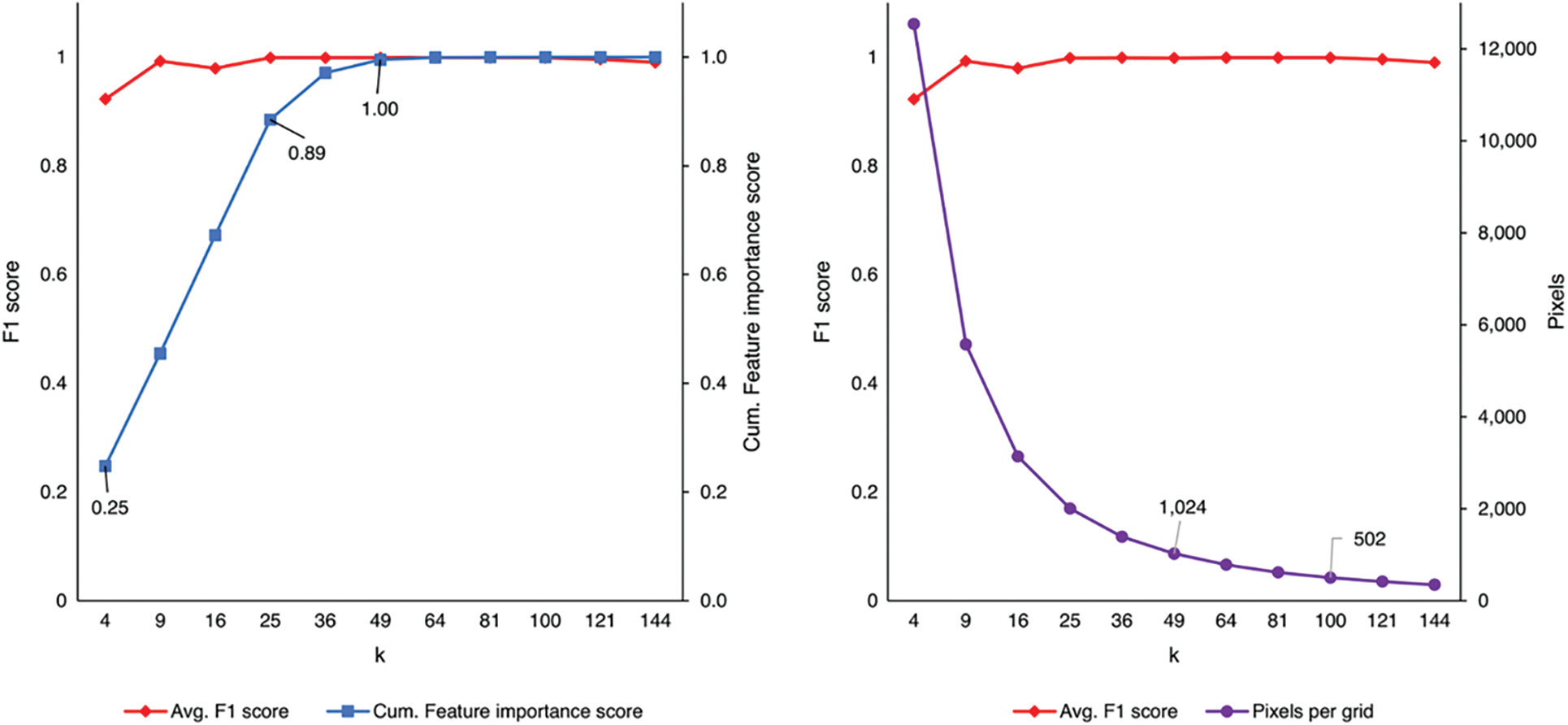
Figure 11: F1 score vs. cumulative feature importance score (left) and F1 score vs. pixels per grid (right)
Furthermore, we note that at k = 9, the performance is already the best when the cumulative feature importance score is only at 0.45. We assume that this may be an anomaly, where the features selected are enough to provide sufficient information. After we analyzed FAR and FNR at k = 9, we found that the false negative rate for k = 9 is relatively high while the false alarm rate is low. This indicates that at k = 9, our trained models have poor performance despite their high F1 score.
We also noticed that at k = 121, the performance slowly deteriorated. We argue that this might be because the additional features we add have a noise effect that affects performance, causing overfit. In addition, we believe that this is also due to the effect of the writing deformation on the image projection. As shown in Fig. 9, reducing pixels per grid makes the text on the image unreadable.
We previously mentioned that writing begins to be unreadable by humans at k = 49. However, this does not seem to apply to the model we were trained for. The model starts struggling to classify at k = 121. We conclude that adding more features creates noise by deforming the writing instead of enriching the information. Furthermore, we argue that k = 100 is an upper limit in adding features.
5 Comparison with State-of-the-Art Methods
We compared our method with several statistical models trained on tabular data. We used the same train and test sets (balanced and imbalanced). We trained Random Forest (RF) [28], Support Vector Machine (SVM) (RBF kernel) [29], and XGBoost [30] 3 times with the same k values as our CNN model. Random Forest was chosen because we used it as our feature ranking algorithm. Meanwhile, SVM and XGBoost were selected to provide a better understanding of the performance of our CNN model. The results can be seen in Tab. 3. We highlighted the best k values and models with the best performance.

The combination with the best performance is XGBoost at k values = 81, 100, 121, and 144. Random Forest has the best performance on the most k values (4, 9, 16, 25, 36, and 49). If we take the F1 score and accuracy average across k, the rankings are 1) Random Forest, 2) XGBoost, 3) our CNN model, and 4) SVM. The performance difference between our model with Random Forest and XGBoost is very small, between 0.35% and 0.40%. We argue that our model is comparable to the statistical model from these results alone.
However, there is a significant gap in the time required to train between our CNN and statistical models. The time required to train the statistical model was less than 10 min while the time required to train our CNN model was approximately an hour. Despite its success in classifying tabular data sets using image projection, implementing CNN has a significant drawback in its time to train the model.
This study proposes a novel projection method of tabular data into grid-based images fed to convolutional neural networks classifiers. We built the IDS module leveraging the EfficienNet to reduce the computation load to suit IoT networks. We project the tabular data of wireless attacks into images by exploiting the zigzag sequences of attributes placed in a matrix. Each attribute value represents the matrix values in the dataset. Using the essential attributes using Feature Ranking and EfficientNet classifier, we achieved the best performance with 99.91% of F1 score. We also successfully maintained the false positive rate of about 0.11%. We also compared the proposed model with other machine learning models, and it is shown that our proposed model achieved comparable results with the other three models. The spatial information should be considered by projecting the tabular data into grid-based images.
In the future, the sequence and pattern to place the attributes in the grid might be affected the image classification performance. In addition, a more lightweight model should be considered when implementing IDS for IoT networks.
Acknowledgement: This research was conducted under a contract of 2021 International Publication Assistance Q1 of Universitas Indonesia.
Funding Statement: This research was conducted under a contract of 2021 International Publication Assistance Q1 of Universitas Indonesia.
Conflicts of Interest: The authors declare that they have no conflicts of interest to report regarding the present study.
1. B. Tushir, Y. Dalal, B. Dezfouli and Y. Liu, “A quantitative study of DDoS and e-DDoS attacks on Wi-Fi smart home devices,” IEEE Internet of Things Journal, vol. 8, no. 8, pp. 6282–6292, 2021. [Google Scholar]
2. T. Alam, “Cloud-based IoT applications and their roles in smart cities,” Smart Cities, vol. 4, no. 3, pp. 1196–1219, 2021. [Google Scholar]
3. S. Brotsis, K. Limniotis, G. Bendiab, N. Kolokotronis and S. Shiaeles, “On the suitability of blockchain platforms for IoT applications: Architectures, security, privacy, and performance,” Computer Networks, vol. 191, pp. 108005, 2021. [Google Scholar]
4. A. Jalal, M. A. Quaid and M. A. Sidduqi, “A triaxial acceleration-based human motion detection for ambient smart home system,” in 2019 16th Int. Bhurban Conf. on Applied Sciences and Technology (IBCAST), Islamabad, Pakistan, pp. 353–358, 2019. [Google Scholar]
5. M. Asaad, F. Ahmad, M. S. Alam and M. Sarfraz, “Smart grid and Indian experience: A review,” Resources Policy, vol. 74, pp. 101499, 2021. [Google Scholar]
6. R. Guo, “Survey on Wi-Fi infrastructure attacks,” International Journal of Wireless and Mobile Computing, vol. 16, no. 2, pp. 97–101, 2019. [Google Scholar]
7. S. J. Lee, D. Y. Paul, A. T. Asyhari, Y. Jhi, L. Chermak et al., “IMPACT: Impersonation attack detection via edge computing using deep autoencoder and feature abstraction,” IEEE Access, vol. 8, pp. 65520–65529, 2020. [Google Scholar]
8. L. Qian, Z. Zhu, J. Hu and S. Liu, “Research of SQL injection attack and prevention technology,” in 2015 Int. Conf. on Estimation, Detection and Information Fusion (ICEDIF), Harbin, China, pp. 303–306, 2015. [Google Scholar]
9. E. Fazeldehkordi, I. S. Amiri and O. A. Akanbi, A Study of Black Hole Attack Solutions: On AODV Routing Protocol in MANET, 1st ed., Waltham, MA, USA: Syngress, 2016. [Google Scholar]
10. P. Ioulianou, V. Vasilakis, I. Moscholios and M. Logothetis, “A Signature-based intrusion detection system for the internet of things,” in Information and Communication Technology Form (ICTF), Graz, Austria, 2018. [Google Scholar]
11. V. V. R. P. V. Jyothsna, R. Prasad and K. M. Prasad, “A review of anomaly based intrusion detection systems,” International Journal of Computer Applications, vol. 28, no. 7, pp. 26–35, 2011. [Google Scholar]
12. A. A. Hady, A. Ghubaish, T. Salman, D. Unal and R. Jain, “Intrusion detection system for healthcare systems using medical and network data: A comparison study,” IEEE Access, vol. 8, pp. 106576–106584, 2020. [Google Scholar]
13. M. Tan and Q. V. Le, “EfficientNet: Rethinking model scaling for convolutional neural networks”, in Proc. of the 36th Int. Conf. on Machine Learning, Long Beach, California, USA, pp. 6105–6114, 2019. [Google Scholar]
14. L. N. Tidjon, M. Frappier and A. Mammar, “Intrusion detection systems: A cross-domain overview,” in IEEE Communications Surveys & Tutorials, vol. 21, no. 4, pp. 3639–3681, Fourthquarter 2019, https://doi.org/10.1109/COMST.2019.2922584. [Google Scholar]
15. N. Chaabouni, M. Mosbah, A. Zemmari, C. Sauvignac and P. Faruki, “Network intrusion detection for IoT security based on learning techniques,” in IEEE Communications Surveys & Tutorials, vol. 21, no. 3, pp. 2671–2701, thirdquarter 2019, https://doi.org/10.1109/COMST.2019.2896380. [Google Scholar]
16. P. Mishra, V. Varadharajan, U. Tupakula and E. S. Pilli, “A detailed investigation and analysis of using machine learning techniques for intrusion detection,” in IEEE Communications Surveys & Tutorials, vol. 21, no. 1, pp. 686–728, Firstquarter 2019, https://doi.org/10.1109/COMST.2018.2847722. [Google Scholar]
17. S. Smys, A. Basar and H. Wang, “Hybrid intrusion detection system for internet of things (IoT),” Journal of ISMAC, vol. 2, no. 04, pp. 190–199, 2020. [Google Scholar]
18. M. A. Khan and J. Kim, “Toward developing efficient Conv-AE-based intrusion detection system using heterogeneous dataset,” Electronics, vol. 9, no. 11, pp. 1771, 2020. [Google Scholar]
19. X. Li, W. Chen, Q. Zhang and L. Wu, “Building auto-encoder intrusion detection system based on random forest feature selection,” Computers & Security, vol. 95, pp. 101851, 2020. [Google Scholar]
20. D. Jin, Y. Lu, J. Qin, Z. Cheng and Z. Mao, “SwiftIDS: Real-time intrusion detection system based on lightgbm and parallel intrusion detection mechanism,” Computers & Security, vol. 97, pp. 101984, 2020. [Google Scholar]
21. M. A. Rahman, A. T. Asyhari, L. S. Leong, G. B. Satrya, M. H. Tao et al., “Scalable machine learning-based intrusion detection system for IoT-enabled smart cities,” Sustainable Cities and Society, vol. 61, pp. 102324, 2020. [Google Scholar]
22. S. N. Mighan and M. Kahani, “A novel scalable intrusion detection system based on deep learning,” International Journal of Information Security, vol. 20, no. 3, pp. 387–403, 2021. [Google Scholar]
23. S. Seonhee and H. Kim, “Visualized malware classification based-on convolutional neural network,” Journal of the Korea Institute of Information Security & Cryptology, vol. 26, no. 1, pp. 197–208, 2016. [Google Scholar]
24. Z. Li, Z. Qin, K. Huang, X. Yang, and S. Ye, “Intrusion detection using convolutional neural networks for representation learning,” in Proc. Int. Conf. Neural Inf. Process., Guangzhou, China, pp. 858–866, 2017. [Google Scholar]
25. I. Al-Turaiki and N. Altwaijry, “A convolutional neural network for improved anomaly-based network intrusion detection,” Big Data, vol. 9, no. 3, pp. 233–252, 2021. [Google Scholar]
26. M. Popescu and A. Naaji, “Chapter 3-detection of small tumors of the brain using medical imaging,” in Handbook of Decision Support Systems for Neurological Disorders, Cambridge, MA, USA: Academic Press, pp. 33–53, 2021. [Online]. Available: https://www.sciencedirect.com/science/article/pii/B978012822271300013X. [Google Scholar]
27. G. K. Wallace, “The JPEG still picture compression standard,” IEEE Transactions on Consumer Electronics, vol. 38, no. 1, pp. xviii–xxxiv, 1992. [Google Scholar]
28. L. Breiman, “Random forests,” Machine Learning, vol. 45, no. 1, pp. 5–32, 2001. [Google Scholar]
29. C. C. Chung and C. -J. Lin, “LIBSVM: A library for support vector machines,” ACM Transactions on Intelligent Systems and Technology (TIST), vol. 2, no. 3, pp. 1–27, 2011. [Google Scholar]
30. C. Tianqi and C. Guestrin, “XGBoost: A scalable tree boosting system,” in Proc. of the 22nd ACM SIGKDD International Conference on Knowledge Discovery and Data Mining, San Francisco, California, United States of America (USApp. 785–794, 2016. [Google Scholar]
 | This work is licensed under a Creative Commons Attribution 4.0 International License, which permits unrestricted use, distribution, and reproduction in any medium, provided the original work is properly cited. |